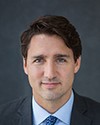Certainly.
Ordinarily, as we mentioned previously, the oil sands is a provincially regulated resource, and the primary regulator there is the Alberta Energy and Utilities Board, which conducts assessments of oil sands projects from a regulatory perspective, whether they be mines or otherwise.
The federal process is triggered when there's a federal decision to be made with respect to the project--typically, regulatory triggers for oil sands projects. So whenever our process is triggered at the federal level and the provincial process is triggered, then we conduct a joint review. I would say, in the case of the oil sands, virtually all of the projects that are assessed federally are also assessed provincially, and therefore we routinely conduct joint reviews for those projects. Those include, for example, Muskeg River Mine back in 2000, the Jackpine oil sands project in 2004, the Kearl project, which we talked about previously, Muskeg River Mine expansion, and a range of others.
Certainly if you're interested we could provide you a list of projects, but there are many of them. There are probably, I would say, in the order of at least 25 or so projects going back to 1999.





